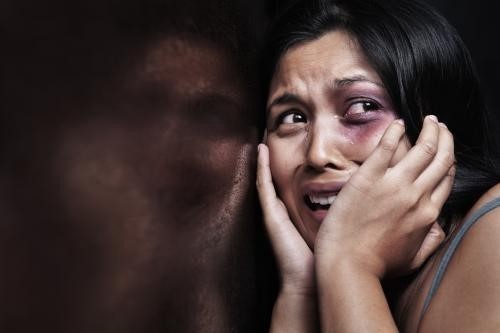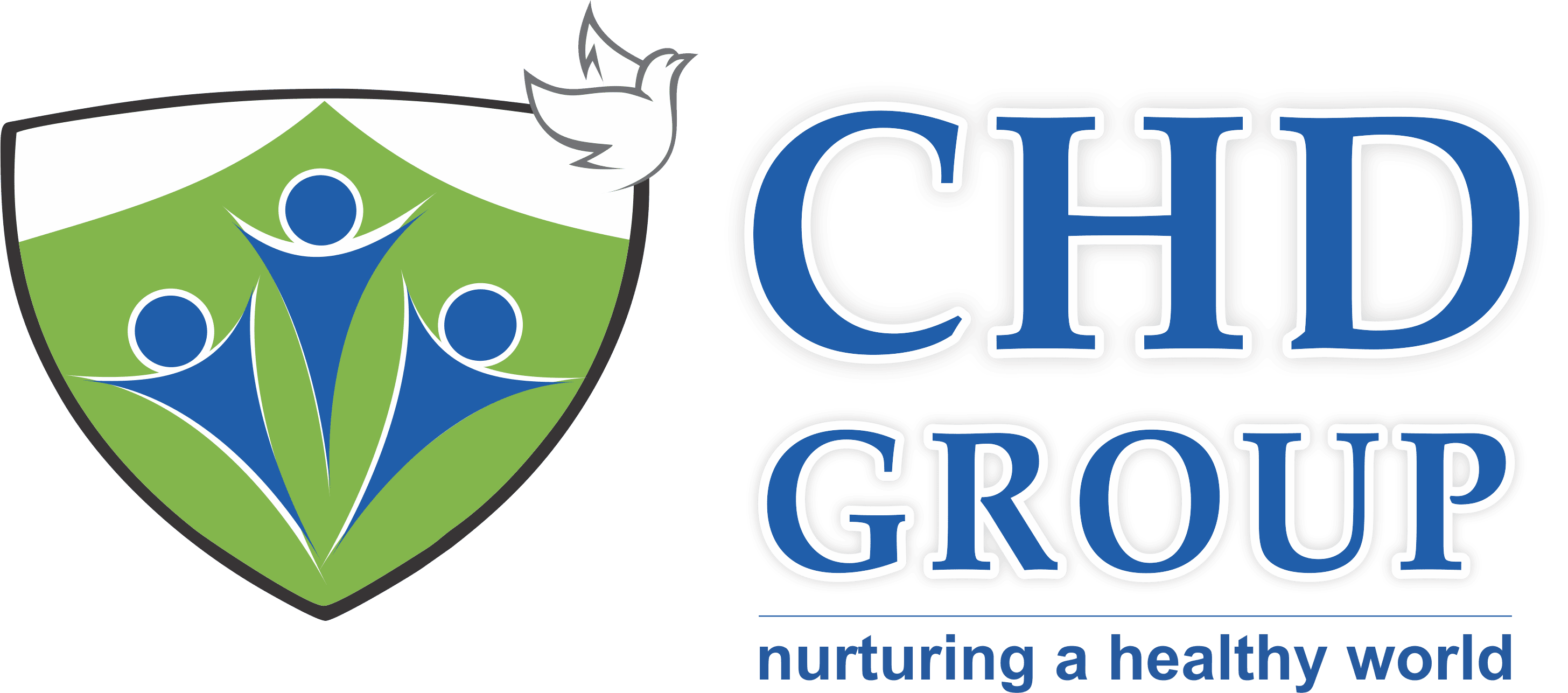Nowadays, the term ‘abuse’ more specifically ‘individual’s abusive behaviour’ has become a burning question in the society. Very frequently people are getting the strike of this negative behaviour which is eventually disturbing all the aspects of health and life.
If we portray the shape of abuse; we can come to know that it has different dimensions and also propagations. It can be defined as a planned or non-casual act or behaviour causing wound, shock, injury or other physical suffering or bodily damage or harm. And for the time being, it can be classified as physical, sexual, verbal or emotional, mental or psychological, financial or economic and cultural or identity. On the contrary, ‘Health is a state of complete physical, mental and social well-being and not merely the absence of disease or infirmity’ says WHO. Therefore, we can see the concept of health and the event of individual abusive behaviour are completely opposite circumstance to be exist.
From different researches we see that, a principal reason behind different abusive behaviors is power and control. [1] To show off or take the control of different situations with ill motives abusive acts are performed which affects the person, the community and the society in different ways.
Straight off, these abuses can be performed in the domestic places, in the professional places, in the educational institutions or in the public places. It has a tremendous negative impact on the life of the victim. If we see them minutely, we will feel how ridiculous these abusive behaviour can be.

Physical abuse is the intentional body injury. For example it can be scratching, biting, slapping, kicking, shoving, choking, strangling, throwing things, force feeding or denying food, using weapon or objects to hurt the victim, physically restraining, reckless driving and other acts to hurt or threaten the victim [2]. It can be seen through some signs and symptoms of the victim’s body. For example, there can be bruises, black eyes, welts, lacerations and rope marks. Broken bones, open wounds, cuts, punctures, untreated injuries in various stages of healing. Following all these signs, there can be sudden change in the behaviour of the suspected victim or the vulnerable adult is also significant. Broken eyeglasses or frames or any other physical signs of being punished or restrained. The caregiver may refuse to allow visitors to see a vulnerable adult one. In some cases, the individual’s report of being hit, slapped, kicked or mistreated. And other notable part is laboratory findings of either an overdose or under dose medications. [3]
Sexual abuse is the nonconsensual sexual contact or an unwanted or forced sex. This includes unwanted touching, rape, sodomy, coerced nudity and sexual explicit [3]. The manifestations of sexual abuse are bruises around the breasts or genital area, unexplained vaginal or anal bleeding, torn, stained or bloody underclothing, an individual’s report of being sexually assaulted or raped and presence of unexplained venereal disease or genital infections. Next comes, emotional abuse. Mental mistreatment or emotional abuse is deliberately causing mental or emotional pain. Examples include intimidation, coercion, ridiculing, harassment, treating an adult like a child, isolating an adult from family, friends, or regular activity, use of silence to control behavior, and yelling or swearing which results in mental distress [3]. It can be evidenced through some significant signs, like: being emotionally upset or agitated, nervousness around certain people, being extremely withdrawn and non-communicative or non-responsive, unusual behavior usually attributed to dementia (e.g.: sucking, biting, rocking etc.) and an individual’s report of being verbally or mentally mistreated [3].
Exploitation is also another form of abusive activity. It occurs when a vulnerable adult or his/her resources or income are illegally or improperly used for another person’s profit or gain. For example, illegally withdrawing money out of another person’s account, forging checks, or stealing things out of the vulnerably adult’s house, unexplained disappearance of funds or valuable possessions, bills unpaid despite the money being available to pay them, sudden appearance of previously uninvolved relatives claiming rights to a vulnerable adult’s possessions, unexplained sudden transfer of assets to a family member or someone outside the family, providing services that are not necessary and the individual’s report of exploitation [3].
Neglecting behaviour to one individual is also an abusive activity. It occurs when a person, either through his/her action or inaction, deprives a vulnerable adult of the care necessary to maintain his/her physical or mental health. It also includes, not providing basic items such as food, water, clothing, a safe place to live, medicine, or health care [3]. On the contrary, self-neglect is other aspect of self-abusive behavior for an adult individual. It occurs when a vulnerable adult living in hazardous, unsafe, or unsanitary living conditions or not having enough food or water characterized by dehydration, malnutrition, untreated or improperly attended medical conditions and poor personal hygiene. It also includes unsanitary, or unclean living quarters (e.g. animal or insect infestation, no functioning toilet, having fecal or urine smell), inappropriate and inadequate clothing, homelessness, lack of necessary medical aids and care and not taking prescribed medications properly [3]. They fail to provide adequate support for themselves and jeopardizes his/her well-being.
Abandonment occurs when a vulnerable adult is left without the ability to obtain necessary food, clothing, shelter, or health care in a public place or leaving the individual at home without the means of getting basic life necessities. Individual’s report of being abandoned is also notable. [3] Eventually, in all these abuses we have seen the different processes which are affecting the victim in different ways for different reasons. But at the end of the process or through the process the victim is endangered both physically and mentally and, in the lifestyle, which actively lowers the standard of living of the victims. In some cases, victims are forced to commit suicide even.
Nevertheless, we all know abusing someone in any way is certainly a criminal offence and as we already said it may lead to victim to perform another or substitute criminal activity to get rid of the abusive situation.
If we follow the victims, we can see the warning signs of being an abuse victim, the emotional signs can be: agitation, anxiety or constant apprehension, changes in sleep habits (sleeping too much or not enough), developing a drug or alcohol problem, extremely apologetic or meek, loss of interest in daily activities, low self-esteem, seeming fearful, symptoms of depression, talking about or attempting suicide [4]. Along with these emotional warning signs, there will be behaviour changes too and people may notice some significant changes in the victim’s behaviour; like: he/she becomes reserved and distant, begins isolating themselves by cutting off contacts with friends and family members, cancels appointment or meetings at the last time, drops out of activities they would usually enjoy, exhibits excessive privacy concerning their personal life or the person with whom they are in relationship, they are often late to work or other appointments. [4]
In the case of child abuse things are more serious! It has numerous aspects like sexual contact with a child, exposing oneself, sharing obscene images or taking inappropriate photos or videos of a child. [5]. It is a crime and can have a serious impact on health and living and most importantly the development of a child. It is completely uncompromising public health issue while child abuse often leads to a lethal outcome if not protected/taken care of. To avoid such critical situation a caretaker or the parents of the child should always be aware of the warning signs and learn how to identify the red flag moment. There are several warning signs of different aspects, like: physical, behavioural and emotional.
Physical signs are signs of trauma to the genital area, such as unexplained bleeding, bruising or blood on the sheets, underwear or other clothing, sexually transmitted infections (STIs). Behavioural signs are excessive talk about or knowledge of sexual topics, keeping secrets, not talking as much as usual, not wanting to be left alone with certain people or being afraid to be away from primary caregivers (especially if this is a new behavior), regressive behaviors or resuming behaviors such as thumb sucking or bedwetting, overly compliant behavior, sexual behavior that is inappropriate for the child’s age, spending an unusual amount of time alone, trying to avoid removing clothing to change or bathe. Lastly, emotional signs are; change in eating habits, change in mood or personality, such as increased aggression, decrease in confidence or self-image, excessive worry or fearfulness, increase in unexplained health problems such as stomach aches and headaches, loss or decrease in interest in school, activities, and friends, nightmares or fear of being alone at night and self-harming behaviors [5]. It is always pretty much important to find out the abuser who is hurting the child. The abuser might be suspected with some significant unusual behavior, like: an adult who doesn’t respect boundaries or listen when someone says ‘no’, engages in touching a child while the child or the child’s parents/guardians have indicated is unwanted, tries to be a child’s friend rather than filling an adult’s role in the child’s life, does not seem to have age appropriate relationships, talks with children about their personal problems or relationships, spends time alone with children outside of their role in the child’s life and makes up excuses to be alone with the child, expresses unusual interest in child’s sexual development i.e. commenting on sexual characteristics or sexualizing normal behaviors, gives a child gifts without occasion or reason, spends a lot of time with the victimized child or another child, restricts a child’s access to other adults [5].
The other types of child abuse are neglect, physical abuse and emotional abuse.
Neglect can be physical; i.e. failure to provide food, shelter or supervision, medical i.e. not providing proper treatment when needed, educational neglect is not accommodating proper education to the child, emotional neglect is not understanding the child’s emotional needs and substance abuse like drugs or alcohol infusion or manufacture and sell them in front of the children. Physical abuse occurs when the parents or the caregiver intentionally injures a child physically by punching, beating, kicking, shaking, hitting or biting. Emotional abuse is also known as psychological abuse. It prevents a child from experiencing self-worth. When a parent or caregiver criticizes, rejects or threatens a child frequently and withholds love or affection from a child, it is then called emotional abuse. It sometimes presents unproven but generally, it exists when the other forms of abuses also take place.
Another weighty abusive incidence is abuse in the work place. The forms of abuse are violence, bullying, discrimination, harassment [6]. If we observe these manners of abusive behaviors violence comes at the first place where an abuser might physically assault his/her victims or use verbal abuse in the workplace to intimidate them. Workplace violence can lead to homicide [6]. Factors that put workers at risk for violence include working alone, at night or in isolated areas. Cashiers and others who exchange money with the public also are at high risk for violence. Law enforcement agents, delivery drivers, health care workers and public and customer service personnel are routinely victims [6].

Another form of workplace abuse is bullying. Workplace bullying ranges from isolating to verbally threatening fellow workers. Bullies can cause anxiety, depression, fear and post-traumatic disorder symptoms in their victims. It also includes ignoring the victim to feel nonexistent. Bullying consists of different tactics to humiliate their victims through gossiping, spreading lies about them or sabotaging their work [6].
Discrimination is another abusive behaviour in the workplace. It is rendered primarily on the basis of race, ethnicity, gender, sexual orientation, religion, disability, age or genetic information. Unfair actions include harassment, retaliation, denying employment opportunities and making decisions that adversely affect people belong to this category. The effects of discrimination can be emotional, physical and social. Depression, a loss of self-confidence, anxiety and feelings of helplessness are emotional effects. High blood pressure, headaches, ulcers, weight loss, and sleeplessness are physical effects. Socially, discrimination leads to lower productivity, poor performance, withdrawal from fellow workers and occasionally violence [6].
The next comes harassment. It consists of actions or comments that a worker finds offensive. Bullying, discrimination and violence often are categorized as workplace harassment. Therefore, harassment victims suffer the same emotional, physical and social effects as the other forms of workplace abuse. The worker doesn’t have to be the harasser’s target; he can be a third party who hears or witnesses the behavior [6].
Henceforth, after discerning the characters of abusive behaviour and their effects on the victims we can easily predict that are leading the victims and their relevant persons to a place where it ends with severe health issues. Simultaneously, creating economic, psychological and security threat to the victims and the society. Such a situation is totally opposite to the exposition of the standard health aspects and their attributes.

Now is the crucial time when people are craving to get rid of the unknown threats to the society, humanity hungers for peace and freedom, at that point of unfolding a better future, abusive behaviour is the most pernicious enemy to mankind. Therefore, it is important to be responsible enough with proper caution about the acts we do in different places at different stages to avoid any occurrence of abusive behaviour which can annihilate someone’s life unintentionally or can save some one from being abused brutally.
About the Author: Dr. Syeda Zerin Imam, is a global health professional working on South And South East Asian Public Health systems and currently Doctoral Candidate at Shandong University, China.
Disclaimer: Views expressed are the authors own. CHD Group takes no liability on behalf or for the contents expressed.
Bibliography
[1] REACH Blog Copyright©2011-2016, “REACH BEYOND DOMESTIC VIOLENCE,” Cummings Foundation , 23 March 2017. [Online]. Available: https://reachma.org/6-different-types-abuse/. [Accessed 19th October 2020].
[2] Article comp, “REACHOUT.COM,” REACHOUT Australia 2020, 2020. [Online]. Available: https://au.reachout.com/articles/what-is-physical-abuse. [Accessed 19th October 2020].
[3] W. S. D. o. S. a. H. Services, “Aging and Long-Term Support Administration ALTSA,” Washington State Department of Social and Health Services , [Online]. Available: https://www.dshs.wa.gov/altsa/home-and-community-services/types-and-signs-abuse. [Accessed 19 October 2020].
[4] B. T and S. Gans, “Very Well Mind,” Ⓒ 2020 About, Inc. (Dotdash), 01 March 2020. [Online]. Available: https://www.verywellmind.com/signs-someone-is-being-abused-66535. [Accessed 19 October 2020].
[5] RAINN, “RAINN,” [Online]. Available: https://www.rainn.org/articles/warning-signs-young-children#overlay=node/2123/edit. [Accessed 19 October 2020].
[6] V. Bolden-Barrett, “Types of Abuse in the Workplace,” © Copyright 2020 Hearst Newspapers, LLC, California, 2018.
